No one knows how to celebrate like the Spaniards. Especially in the summer, there’s hardly a moment of rest due to all the Fiestas in Mallorca. In this overview of the village festivals in Mallorca, we focus particularly on family and child friendliness. However, ultimately, all the festivals are designed to appeal to everyone who loves to celebrate.
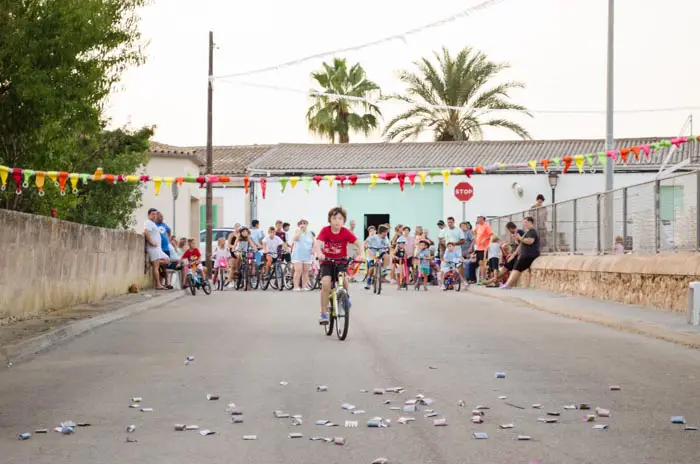
Transparenzhinweis: Einige Links in diesem Beitrag führen eventuell zu externen Buchungsmöglichkeiten. Kommt es zu einem Kauf, erhalte ich eine kleine Provision. Am Preis ändert sich für dich nichts.
The mandatory nighttime curfew at midnight is lifted during the festival days. Parades take place, with giant figures and demons parading through the streets of the villages. There are markets, exhibitions, fairs, and the typical verbenas of Mallorca: nights filled with dancing and music.
The festival program includes a mix of folklore and modern nightlife. There are special events for children on at least one, often several days. It gets colorful, wet, and above all, very loud.
- The Most Important Fiestas and Village Festivals in Mallorca
- The Three Kings in January
- Sant Antoni & Sant Sebastian in January
- Carnival in February
- The Day of the Balearic Islands in March
- The Big Fair in April
- Semana Santa: Holy Week and Easter
- Flower Festival in Costitx
- Pirate Battles in Sóller in May
- Ship Processions for San Pere in June
- Boat Processions in July: Celebrating the Virgin of Carmen
- Duck Throwing in Can Picafort in August
- Festival in Honor of King Jaume in September
- Christmas in Mallorca
- New Year’s Eve: Red Underwear and Twelve Grapes
- Seasonal Markets and Fairs
- Read More
The Most Important Fiestas and Village Festivals in Mallorca
The Three Kings in January
The Feast of the Three Kings is almost more important in Spain than Christmas Eve. While there are smaller gifts on December 24th, the real big ones are brought by the Kings on the eve of January 5th to 6th.
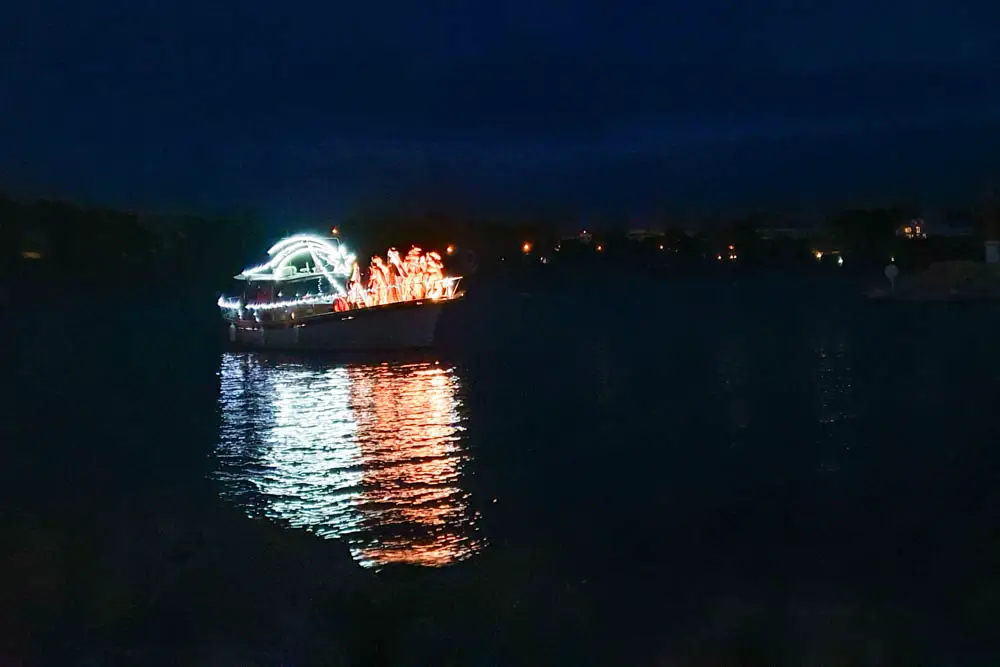
On January 5th, they majestically arrive. In Palma and other coastal towns, they traditionally arrive by boat in the harbor. In other places, they might even arrive in a convertible. The largest parade takes place in Palma. Almost like during carnival, but bigger, floats parade through the streets and sweets are thrown. In the villages, the Kings also hand gifts to the children, provided the parents have previously dropped them off at the city hall.
Sant Antoni & Sant Sebastian in January
In January, the coldest month in Mallorca, two celebrations take place outdoors, heating up the atmosphere. Starting in mid-January is the festival honoring the Saint Sant Antoni. He is the patron of animals and successfully fought against demons. And that’s precisely what the festival entails. Children dress up as little devils. There are bonfires and barbecue evenings in central village squares, and during the day, animals are blessed in a parade.
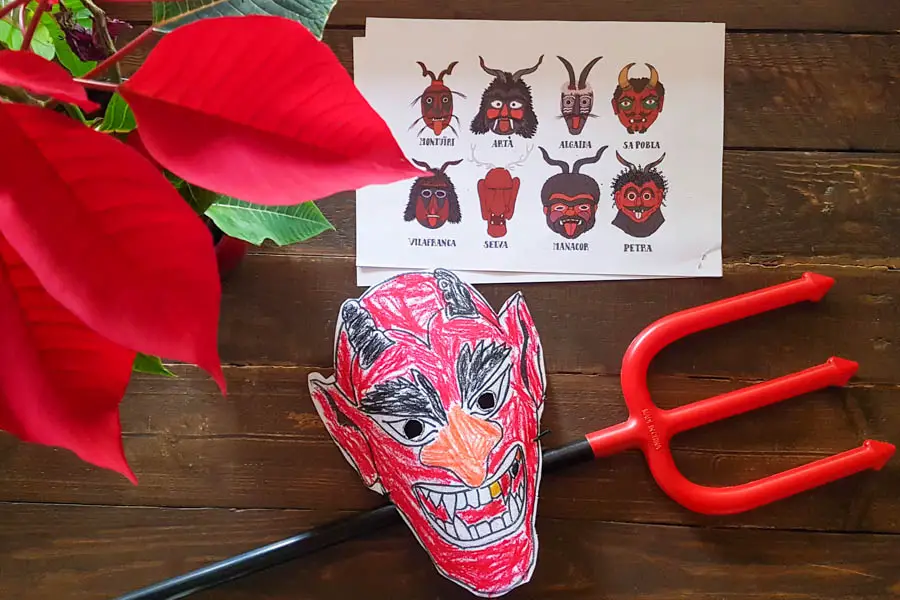
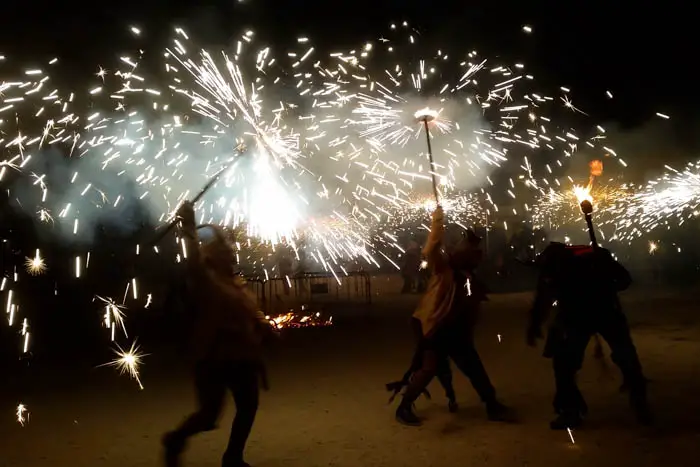
Just a few days later, Palma celebrates the city’s patron saint, Saint Sebastian. A relic of the saint is said to have ended one of the city’s worst plague epidemics. In the past, the festival was more about the saint. Today, it’s almost exclusively about partying and having a good time. Live music is spread throughout the entire city center. And the obligatory fire dance is a must. Demons dance with pyrotechnics to drum music in the streets. Those who dare can join in the dancing.
Carnival in February
Mallorca isn’t a carnival hotspot, not even compared to other Spanish regions. But there’s still a bit of dressing up for Carnival on Mallorca. Firstly, in schools, where individual classes dress up together according to a theme and show off their best side during the Ruetas, the small street parades.
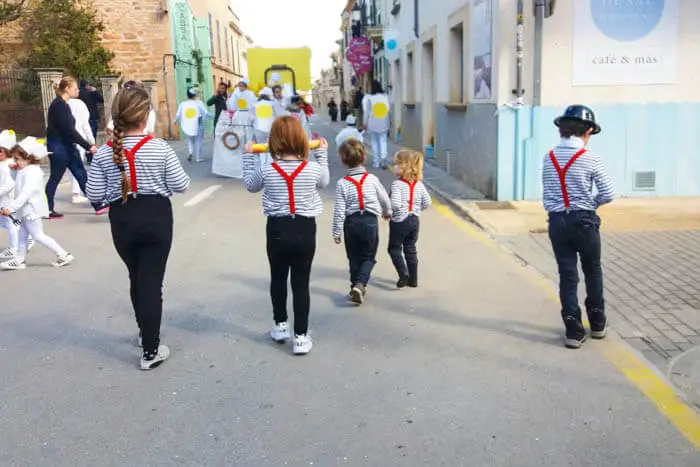
Larger carnival parades, where adults also participate, are called Rua. Sa Rua, the largest carnival parade, takes place in Palma. And elsewhere, people put effort into elaborate costumes and dance choreographies because individual groups are often awarded prizes.
The Day of the Balearic Islands in March
On March 1st, the autonomous status of the Balearic Islands is celebrated. The Day of the Balearic Islands is almost more important than the Spanish National Day. The festivities span several days and are aimed at adults and children.
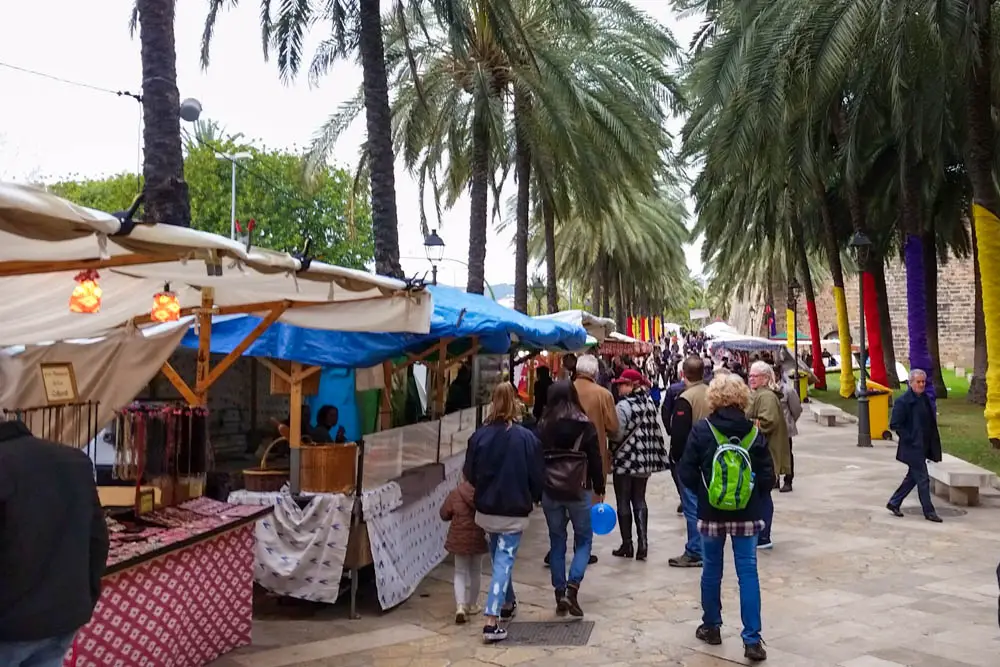
The Day of the Balearic Islands, or “Diada de les Illes Balears,” is particularly celebrated in Palma. Many institutions open their doors and offer free tours. There are play areas for children and a large market.
The Big Fair in April
The Fira del Ram is the largest fair in Mallorca and actually begins at the end of February or the beginning of March. Originally, it was a small pilgrimage to a monastery located slightly outside the city, which took place on Palm Sunday. It provided an opportunity for traveling merchants to sell their goods.
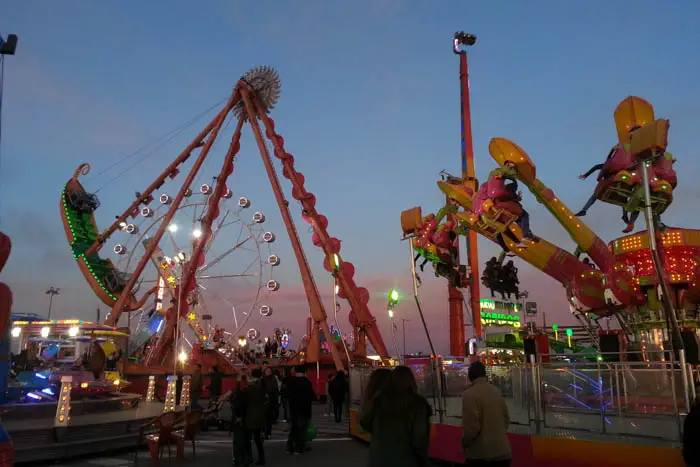
Over the years, more and more merchants and other exhibitors joined the fair. Additionally, the religious figure around which the event revolved was moved to another church, where space became limited. The Fira del Ram was then temporarily held in front of the cathedral until it was relocated to the industrial area, where it still takes place today.
Semana Santa: Holy Week and Easter
The Semana Santa is the most important religious holiday on the island. Like on the mainland, Easter is celebrated in Mallorca with very intense and ancient traditions. Especially the processions, which take place all over the island throughout Holy Week, offer a good insight into the original Mallorca.
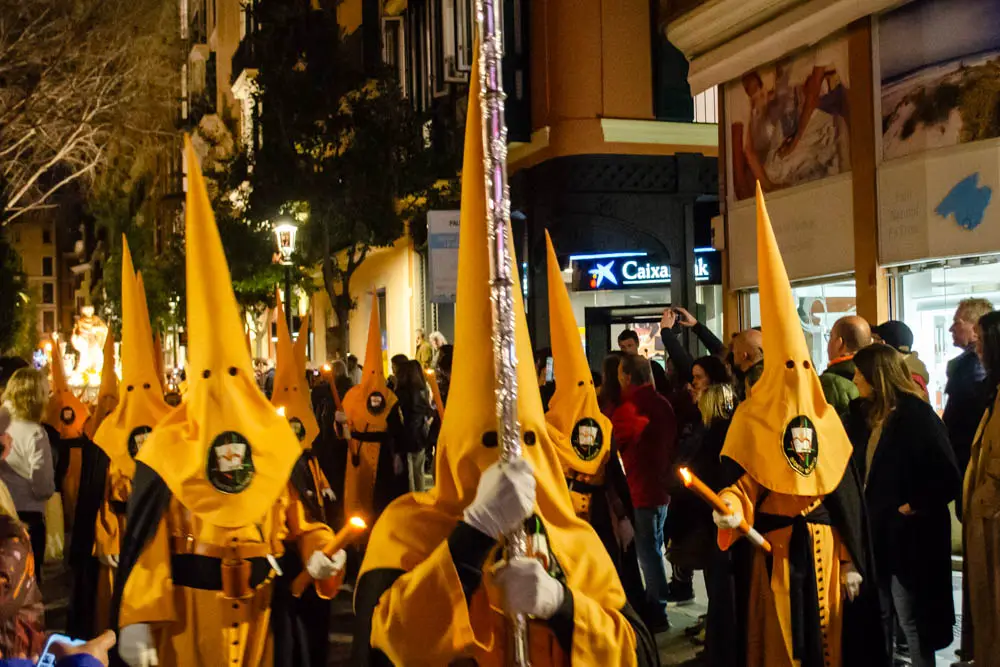
The largest and most impressive procession takes place on Maundy Thursday in Palma. There, all brotherhoods march together through the streets. Smaller and more traditional processions can be observed in the villages. You can witness the procession on Good Friday there.
Flower Festival in Costitx
On May 1st, festivals take place in many parts of Mallorca. The most beautiful, in our opinion, is in the small village of Costitx, in the center of the island. Countless people pilgrimage there every year to admire the creative flower decorations that the villagers put together anew each year.
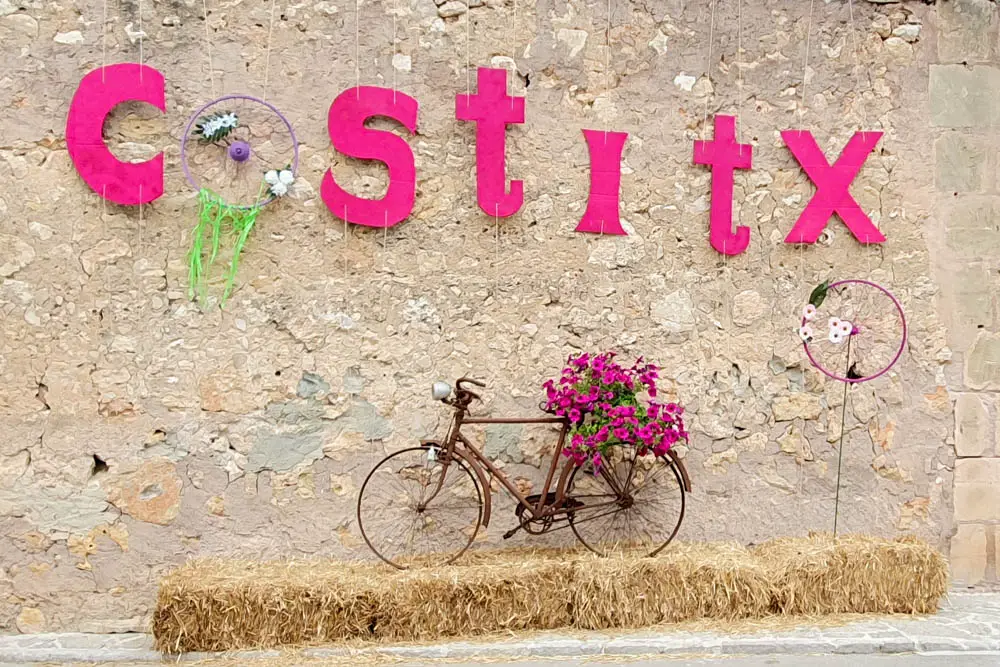
The festival is surrounded by numerous traditional dances, music, workshops for children, and a market where, in addition to flowers and plants, many other typical Mallorcan items can be found.
Pirate Battles in Sóller in May
In the 16th century, Mallorca suffered greatly from pirate attacks. Coastal towns like Port de Sóller were particularly affected. The most important battle fought by the Mallorcans also took place there. And ended, although it didn’t initially seem so, in a victory.
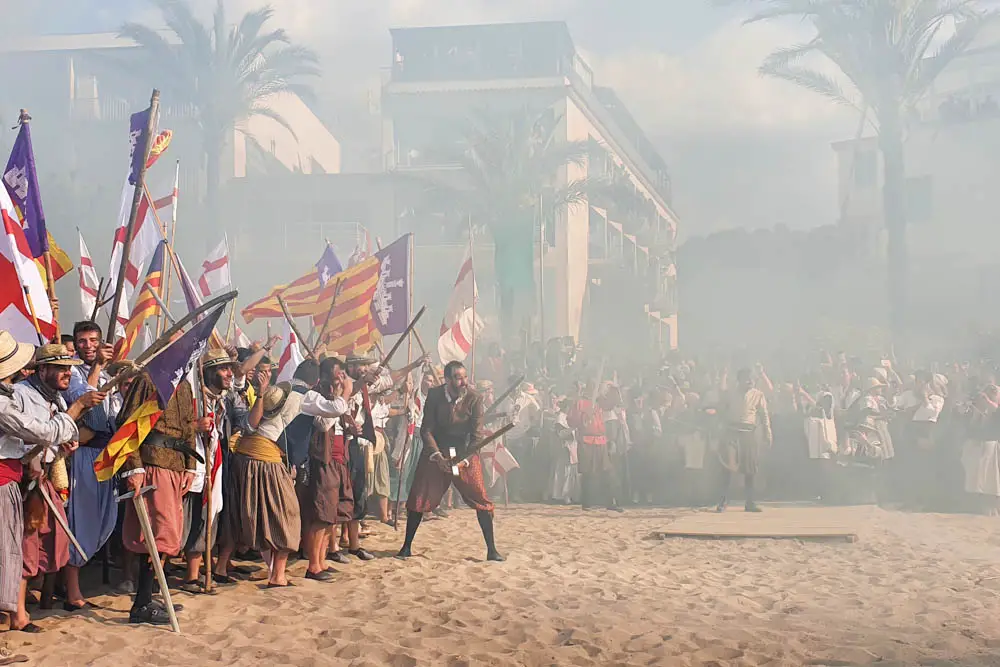
This event has become so ingrained in the memory of the Mallorcans that the battle is almost completely reenacted every year. It starts with two battles in the afternoon on the beach of Port de Sóller, until with much noise and shouting, it moves to Sóller, where further combat takes place. Around midnight, the victory of the Sóller residents is announced at the city hall.
Ship Processions for San Pere in June
Peter, Pedro, or Pere is the patron saint of fishermen and sailors and is always honored with a grand festival in June. What makes this celebration special are the sometimes elaborate ship processions that take place.
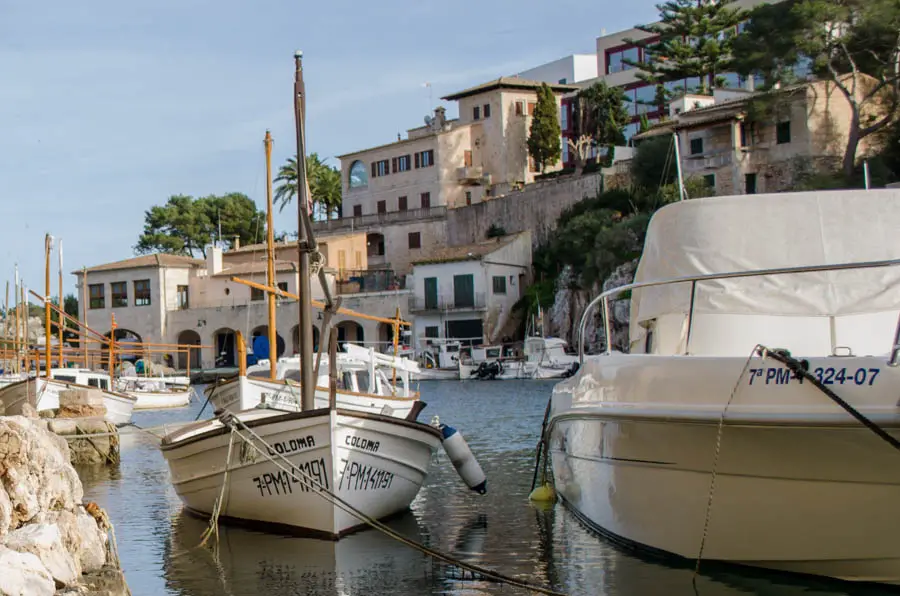
The festival is celebrated primarily in coastal towns, fishing villages, and ports. The celebration is particularly grand every year in Port d’Alcúdia.
Boat Processions in July: Celebrating the Virgin of Carmen
In July, it’s the Virgin of Carmen, patron saint of fishermen and sailors, who is also celebrated with boat processions. The participating towns may vary, but the setup is similar. Particularly impressive celebrations take place in Cala Ratjada, Cala Figuera, and Port de Pollença.
Typically, more people participate in the July festival because it falls right in the peak season when most tourists are on the island. It’s definitely a wonderful opportunity to experience Mallorcan traditions up close.
Duck Throwing in Can Picafort in August
In August, the resort town of Can Picafort celebrates its patron saint, the Holy Mother of God. This is marked by the largest fireworks display in Mallorca and a tradition dating back centuries: duck throwing.
Originally, real live ducks were thrown into the sea, and the aim was to catch them. Those who succeeded could enjoy a tasty roast. However, animal rights activists put an end to this practice. Nowadays, only yellow rubber ducks are tossed into the sea. Some of them are numbered, corresponding to prizes. Anyone who can move in the water can participate.
Festival in Honor of King Jaume in September
Rey Jaume I was the King of Aragon and, after liberating the island from the Moors, also the King of Mallorca. The real deal. He first arrived in Santa Ponça in 1229 from the mainland, from where he launched the reconquest.
Every year in September, several days are dedicated to commemorating this event. A medieval market takes place, and at various locations in the town, the battles of yore are reenacted scenically.
Christmas in Mallorca
With the switching on of the Christmas lights in Palma at the end of November, the Christmas season begins in Mallorca. This includes special culinary delights, lots of lights, and, of course, Christmas markets. You can find out where the Christmas markets in Mallorca take place here.
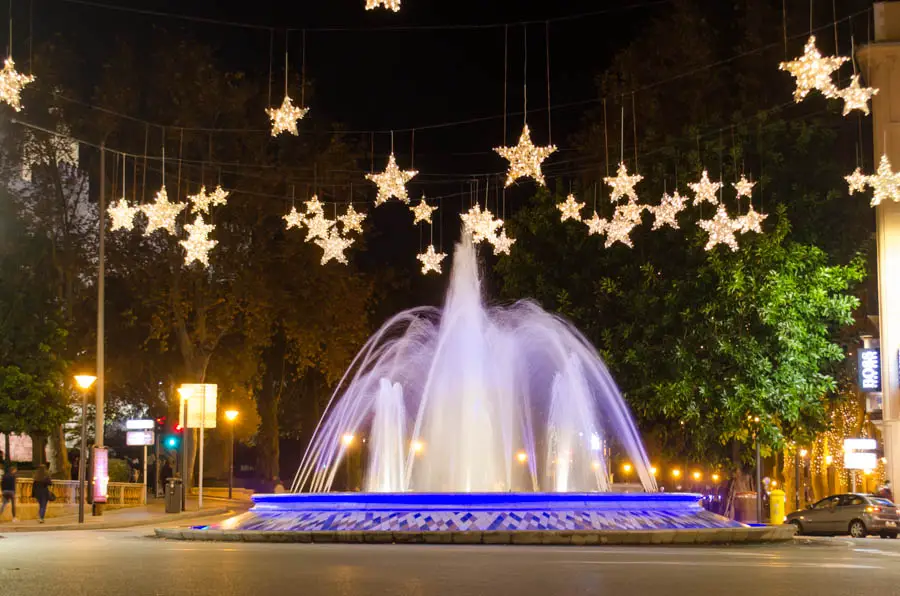
A special feature of the Mallorcan Christmas season is the Nativity scene. It’s more important than a Christmas tree and is found in almost every home. During the Christmas season, the figures are moved around until the arrival of the Three Kings in early January, when the Nativity scene can be dismantled.
New Year’s Eve: Red Underwear and Twelve Grapes
New Year’s Eve in Mallorca is celebrated with red underwear and twelve grapes. Both are traditional Spanish customs. While we can’t speak for all Mallorcans when it comes to underwear, everyone participates in eating the grapes: one grape must be eaten with each of the twelve chimes at midnight. The celebration takes place at home and in public squares. Fireworks are only sporadically seen.
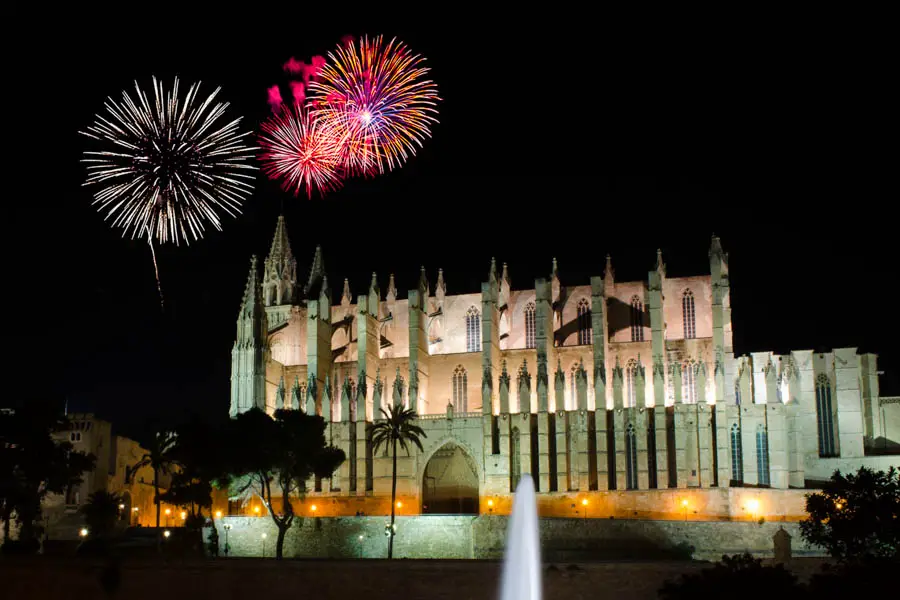
On December 31st, alongside New Year’s Eve, another important event is celebrated in Mallorca. The Festa de l’Estandart (Festival of the Standard) commemorates the recapture of Palma by King Jaume I on New Year’s Eve in 1229.
Seasonal Markets and Fairs
The so-called ferias are agricultural fairs and markets with a festive atmosphere that take place throughout the year in various towns. They showcase the cultural heritage of the island and are a place where old customs and culinary specialties can be experienced.
Certainly, here’s the translated list:
- January: Christmas and Three Kings Fair, Palma
- February: Almond Blossom Festival, Son Servera; Naturesport Fair, Escorca, Lluc Monastery.
- March: Pottery Fair, Marratxi; Fira Bona, Palmanyola; Sant Patrick’s Festival, Santa Ponça; Fira de Son Ferril, Palma; Ovrina y Caprina Fair, Calvià.
- April: Andratx Fair; San Francisco Fair, Muro; Nautical and Cuttlefish Fair, Alcúdia; Salt and Salted Fish Fair, Colonia de Sant Jordi; Book Fair in Villafranca de Bonany.
- May: Flower Festival in Costitx; Wine and Cheese Festival, Estellencs; Sa Fira and Es Firó, Pirate Festival in Sóller; Medieval Market in Capdepera; Sheep Shearing Festival in Es Llombards.
- June: Spring Festival in Manacor, Potato Festival in Sa Pobla, Herb Festival in Selva, Apricot Festival in Porreres.
- July: Maritime Night Fair, Portocolom.
- August: Night Market and Tomato Festival, Maria de la Salut; Melon Festival in Muro.
- September: Medieval Festival commemorating the Reconquest of Mallorca by King Jaume, Santa Ponça; Wine Festival in Binissalem.
- October: Tramuntana Sierra Fair, Escorca; Theater Festival in Vilafranca de Bonany; Autumn Festival in Santanyí.
- November: Beer Festival in Puigpunyent; Olive Festival in Caimari, Dijous Bo in Inca; Honey Festival in Llubí.
- December: Christmas Markets in Palma, Christmas Markets in Mallorca.
Read More
Want more recommendations like this? Check out more than 100 day trips and excursions on Mallorca.
Planning your holiday on Mallorca:
Book your Flight here
Great Rental Car Offers

